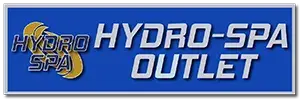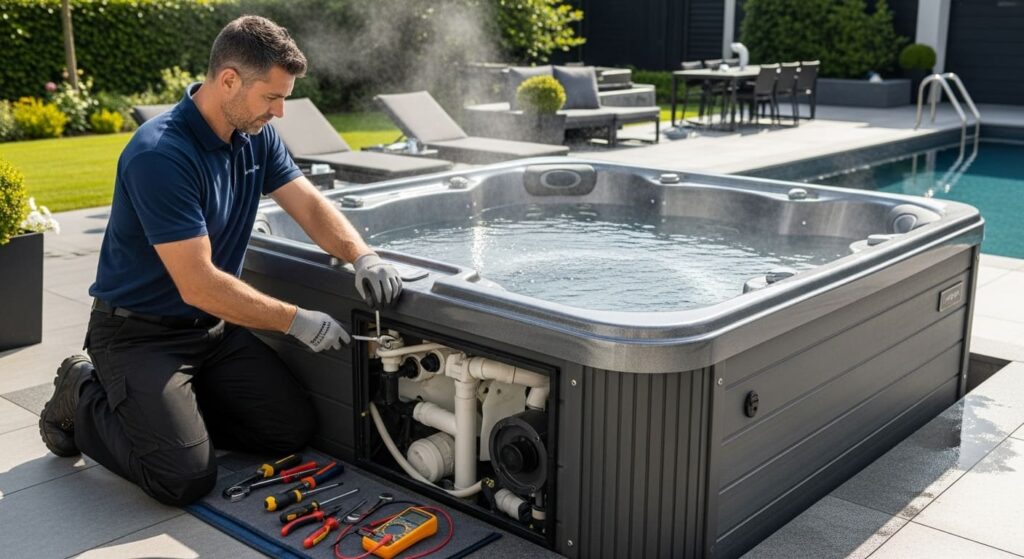Hot tub ownership in Woodland Hills comes with its own personality. Warm, sunny afternoons surrender to cool evenings that practically insist on a soak. But the same climate that makes spa time irresistible can also stress components and challenge water quality. The smartest owners blend attentive maintenance with timely repairs, creating a rhythm that keeps the tub reliable while avoiding unnecessary downtime. If you are shaping your approach, it helps to ground your plan in the core principles of hot tub maintenance and then apply them through the lens of our Valley’s sun, wind, and mineral-rich water.
Maintenance and repair are two sides of the same coin. Good care prevents many issues, and a quick repair stops a small problem from growing. In a region where Santa Ana winds can push fine grit into every crevice and UV can be relentless, prevention is powerful. A cover that seals well, a filter that flows freely, and a schedule that accounts for actual use set you up to enjoy the tub rather than chase problems around it.
Reading the early signs
Small clues matter. A faint hum from the pump that wasn’t there before, a subtle drop in jet pressure, a slight chemical smell despite proper readings—these whispers often appear before anything obvious breaks. Catching them early lets you respond calmly. Check for clogged filters, verify circulation times, and look for moisture under the equipment bay. In our low-humidity air, evaporating drips can leave light mineral trails that point to the source of a leak. Following those trails now can spare you a headache later.
Keep an ear out during start-up and shut-down. A healthy pump should come on smoothly and quiet down as water moves through the system. If start-ups sound strained or rattly, the pump could be fighting restricted flow or developing wear. Addressing flow with a thorough filter cleaning, then observing again, is an easy first step before you assume a component has failed.
Protecting against sun and wind
Our sunlight is both a blessing and a burden. UV accelerates the aging of covers and headrests, and it breaks down certain sanitizers quickly. Using your cover during the day and adding shade where possible reduces stress on materials and water chemistry. During wind events, secure the cover and remove loose items that could end up in the tub. Afterward, skim, check the sanitizer, and rinse the filter to keep fine debris from bogging down the system.
Seals and gaskets also face more wear when grit is present. A quick wipe of the waterline and the underside of the cover after a dusty day prevents the cycle of grit recirculating through the plumbing. The less abrasive material inside the system, the happier the moving parts.
When maintenance becomes repair
Despite best efforts, things wear out. Covers lose buoyancy and insulation, filters reach the end of their useful life, and seals eventually fatigue. Pumps and heaters last longer with balanced water and clear flow, but they, too, have lifespans. The point of routine maintenance is to stretch those lifespans and to turn replacements into planned events rather than emergencies. When a component crosses the line from tired to failing, timely replacement protects the rest of the system and your peace of mind.
Electrical issues deserve prompt attention. If a breaker trips more than once, treat it as a diagnostic flag. Loose connections, water intrusion, or a failing component can all be culprits. In a backyard where irrigation, pets, and wind-blown debris share space with sensitive equipment, keeping the equipment bay tidy and dry is fundamental.
Water quality as a protective force
Balanced water protects everything it touches. High calcium hardness combined with heat invites scale on heater elements and around jets, while low pH can attack seals. Maintaining pH, alkalinity, and sanitizer in a steady range is more than a comfort play; it is mechanical protection. In Woodland Hills, where evaporation concentrates minerals, it is normal to nudge the balance more often as water ages. Plan consistent check-ins and make small corrections. Your equipment will thank you.
Odor, cloudiness, and foaming are signs to investigate. Often, they point to sanitizer depletion or a filter that needs attention. If balance and flow look right but symptoms persist, consider a system purge before your next drain-and-refill. Biofilms in low-flow plumbing sections can erode sanitizer and create recurring issues that seem to defy testing. Clearing that hidden layer resets the system and restores predictability.
Smart scheduling for our microclimate
Match your maintenance and repair calendar to the seasons. Late summer and early fall can be dusty, calling for more frequent filter rinses. Winter invites heat-retention strategies and cover checks. Spring brings pollen, making it a perfect time for a drain-and-refill with a thorough purge. Align significant work—like replacing a tired cover or upgrading a pump—with quieter usage periods so you do not miss out during prime soaking months.
For spas on open patios, consider a floating thermal blanket in cooler months. It reduces heat loss, keeps evaporation in check, and lessens the load on the main cover. Small upgrades like this are simple to install and pay off in comfort and reliability.
Calling in professional help
There is a time to grab the test kit and a time to grab the phone. Persistent leaks, recurring error codes, unexplained power trips, and performance drops that do not resolve after filter cleaning are moments for expert attention. A technician familiar with the Valley will consider wind-driven debris, UV exposure, and common model-specific quirks in their diagnostics. They will also suggest preventive tweaks—like adjusting circulation schedules or improving cover fit—that keep your tub calm and dependable.
Before big holidays or planned gatherings, a preventive check is wise. Verifying that the heater cycles smoothly, the cover seals well, and the filter media is in top condition spares you last-minute surprises. Think of it as a pre-flight checklist for your backyard retreat.
Repair choices that respect the whole system
When it is time to replace something, choose components that complement your spa’s design and your usage. For example, if your household enjoys long, vigorous jet sessions, selecting a pump with appropriate flow characteristics protects both comfort and longevity. If your spa sits in full sun, investing in a UV-resistant cover material is worth it. In other words, upgrade with intention. The right choices reduce future maintenance and keep enjoyment high.
Keep records of what you replace and when, along with notes on symptoms leading up to the repair. These breadcrumbs help you and any technician spot patterns early. Over time, your spa’s history becomes an asset that informs smarter decisions and fewer surprises.
FAQ
1. How do I know if a pump noise is serious?
New or growing noises that persist after a thorough filter cleaning merit attention. If the pump struggles at start-up or the sound is accompanied by reduced jet performance, schedule a diagnostic to prevent further wear or heat buildup.
2. What should I check first if water looks dull but tests fine?
Look at the flow. Clean the filter deeply, verify circulation schedules, and inspect for partial obstructions at jets or intakes. If that does not solve it, consider a system purge to address hidden biofilm before your next water change.
3. When is it time to replace the cover?
If the cover feels waterlogged, does not seal evenly, or shows cracks along the hinge, replacement is due. A healthy cover protects heat, blocks debris, and supports water quality—key factors for both maintenance and repair avoidance.
4. Do Santa Ana winds require special steps?
Yes. Before the wind, secure the cover. Afterward, skim, confirm sanitizer, and rinse the filter. That rapid response prevents fine dust from circulating endlessly and reduces wear on moving parts.
5. Should I attempt electrical repairs myself?
Electrical work on a spa can be hazardous. If breakers trip repeatedly, controls behave erratically, or components show signs of overheating, enlist a professional. Safety and long-term reliability both depend on proper diagnostics and repair.
With a clear plan and timely attention, your spa will stay ready whenever the evening air turns crisp. Keep a trusted guide to hot tub maintenance at your fingertips, respond early to small changes, and do the right repair at the right time. You will enjoy the best of Woodland Hills living—quiet, comfortable, and always just a few steps from a perfect soak.
Restore and Maintain Your Spa with Hydro-Spa Outlet Experts
Don’t let minor issues turn into major repairs — keep your spa in top condition with professional hot tub repair and maintenance. Contact Hydro-Spa Outlet in Woodland Hills, California, for trusted service that restores comfort, performance, and peace of mind.
Read more:
Hot Tub Water Maintenance In Woodland Hills California
Hot Tub Maintenance Schedule For Woodland Hills California Owners

